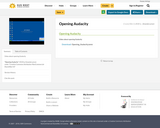
Video about opening Audacity
- Subject:
- Education
- Educational Technology
- Material Type:
- Teaching/Learning Strategy
- Date Added:
- 10/04/2018

Video about opening Audacity
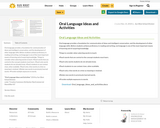
Oral language provides a foundation for communication of ideas and intelligent conversation, and the development of other language skills. Before students achieve proficiency in reading and writing, oral language is one of the most important means of learning and of acquiring knowledge.
Things to consider when selecting words to teach:
•Teach words that are central to the concept students must learn.
•Teach only words students do not already know.
•Teach students to use context clues, when available.
•Teach only a few words at a time so meaning is retained.
•Relate new words to previously learned words.
•Provide multiple exposures to words.
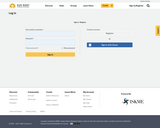
The work that teachers do varies greatly, but they are connected by their belief the power of talk. During the year these teachers supported oral language in their own way. This projected used an appreciative inquiry model to support and capture the widely divergent strategies, learnings, and support teacher's individual needs while supporting oral language development in the classroom.
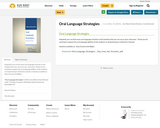
Hopefully you can find some oral language activities in this handout that you can use in your classroom. Thank you for working to support the oral language abilities of the students on Saskatchewan’s Hutterite Colonies!
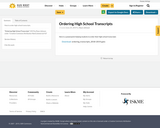
How to order high school transcripts.
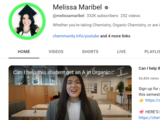
This site is designed to help students pass Chemistry and Organic Chemistry. Melissa used to struggle with this subject, so when she finally graduated with a bachelor's degree in Chemistry, she became a tutor so that you wouldn't have to struggle like she did.
With the right help, YOU CAN LEARN ANYTHING!
Topics include:
organic chemistry survival guide
thermochemistry
naming compounds and acids
dimensional analysis, significant figures, density guide
gas laws
stoichiometry
redox reactions
molarity
lewis structures
kinetics
titrations
matter, atomic structure, empirical and molecular formulas
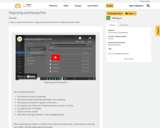
A video to demomstrate how to organize and name files when collaborating with others.
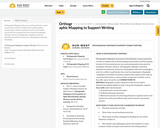
Orthographic Mapping is the process of forming letter-sound connections
in order to combine and recall the spelling, pronunciation, and the
meaning of words. It is the mental process we use to permanently store
words for immediate, effortless retrieval. Orthographic mapping is a skill
that develops from phonemic awareness and grapheme-phoneme
knowledge.

Ditch That Textbook offer 4 videos to will support teachers in preparing students for a future in which they will be in control, by letting them practice having autonomy and choice.
VIDEO 1: EMPOWER STUDENTS WITH CLASSROOM VOTING
VIDEO 2: BUILD RELATIONSHIPS WITH CLASSROOM SURVEYS
VIDEO 3: INSTILL RESPONSIBILITY WITH CLASSROOM JOBS
VIDEO 4: CREATE AN "OUR CLASS, OUR VOICE" CLASSROOM" - AUTONOMY & VOICE

This video demonstrates how Common Core literacy standards can come to life naturally, thoughtfully and joyfully for kindergartners, who engage in real-world research in their own school. Through interviewing school staff members, the kindergarteners come to understand their contributions to the school and the meaning of community, and create beautiful informational cards to honor staff.

Talk for Writing is an engaging teaching framework developed by Pie Corbett, supported by Julia Strong. It is powerful because it is based on the principles of how children learn. It enables children to imitate the language they need for a particular topic orally, before reading and analysing it, and then writing their own version.
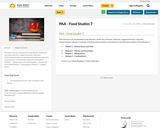
This extensive unit, developed by Cindy Menzies, details the outcomes, indicators, suggested lessons, classroom posters/student reference materials, formative and summative assessments for the following modules of Food Studies 7:
Module 1 – Kitchen Basics and Tools
Module 2 – Kitchen and Food Safety
Module 3 – Baking Basics
Module 4 – Cooking Basics

PBL Peer Assessment
PBL Planning Forms
PBL Project Essentials Checklist
PBL Project Management Kit
PBL Project Planning and Management Tools
PBL Project Planning Forms
PBL Rubric for Project Design Evaluation
PBL Sample Rubrics
PBL Science 10 CR1 Chemical Reactions
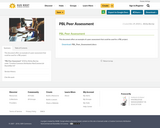
This document offers an example of a peer assessment that could be used for a PBL project.
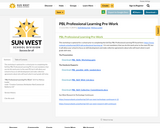
This workshop is optional for a school prior to completing the full Day PBL Professional Learning PD. It is not mandatory that you do this work prior to the main PD, but it will allow your school to focus on skill development and make collective agreements about who will teach what in each grade skill-wise.
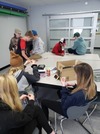
This is meant to give insight into our process to help with your school's brainstorming process. There are so many different ways to take project-based learning and we have been experimenting with a few of them.

Explore the many forms of visual art, from basket weaving to painting, and glasswork to furniture, with resources that encourage analysis, research, and practice. Preschoolers can practice their colors and discover how colors change when mixed with a lesson from the Abracadabra series. Middle and high school students can design self-logos and write descriptions of them after watching "The Art of Logo Design" from Off Book. The Math + Arts collection provides cross-curricular lessons that combine math with visual arts topics such as Shapes & Patterns, Perspective Drawing, and Totem Poles. Filmmaking, photography, and architecture, in addition to careers in art, the history of visual arts, and art institution, are all also explored.
Explore the videos, interactive lessons, interactives, lesson plans, galleries, audio files, images, documents, webpages and collections. Lots to offer!

Invasion games: soccer, basketball, football, rugby and hockey.
Target games: golf, archery, bowling, bocce ball, and billiards.
Net/wall games: tennis, volleyball, squash and badminton.
Striking/fielding games: baseball, cricket, softball and kickball.
Chasing & Fleeing Games
Movement Skill Games
Cooperation Games
Health & Fitness Games
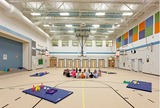
Poster to display in your classroom or gym for elementary schools - Be a PAL: Positive Active Listen

Socially-based Curriculum Unit
In this unit developed for NAC1O (Expressing Aboriginal Culture), students create a collaborative art piece that expresses Aboriginal identity in a variety of areas. The collaborative art piece consists of many individual pieces of art that form together to form the word “pride.” Each letter has a group assigned to it, and each letter is assigned a theme/idea (ie. clanship, land claims, traditional teachings, community activities, etc) that is researched and then expressed in the artwork of each letter and presented to the class.
Students are provided with an opportunity to discover why Aboriginal peoples identify and are concerned with certain social and political issues. They are also given the opportunity to research an assigned topic, express themselves creatively, work in a group setting, discuss salient issues, and present to their peers. The project also fosters a sense of classroom unity via large group collaboration.